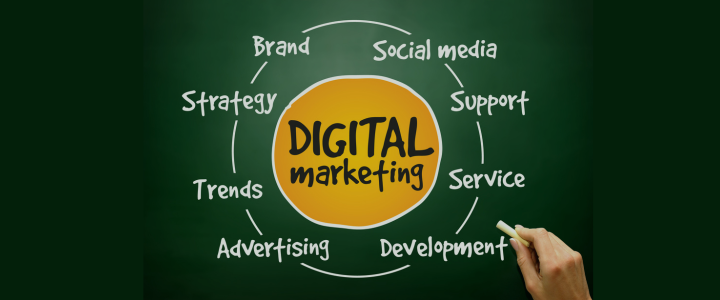Introduction: Navigating the Digital Landscape
In the era of online dominance, businesses are propelled to new heights through the strategic orchestration of digital marketing frameworks. This blog unveils the intricate layers of these frameworks, illustrating their role as the scaffolding guiding businesses through the complexities of the digital realm.
1. Defining Objectives: The North Star of Digital Strategy
Setting the Stage for Success
At the core of any effective digital marketing framework lies the crucial step of defining objectives. This section delves into the importance of establishing clear goals, aligning digital efforts with overarching business objectives, and crafting a narrative of success.
2. Understanding Your Audience: Crafting Messages with Precision
Speaking to Hearts and Minds
In the vast digital landscape, businesses must understand their target audiences intimately. This section explores the significance of demographics, behaviours, and preferences, showcasing how businesses can tailor their messages to resonate with their audience effectively.
3. Channel Allocation: Balancing the Digital Scale
Strategic Presence Across Platforms
Social media, search engines, and email campaigns form the channels businesses project their digital presence. This section delves into the art of strategic resource allocation, ensuring that each platform is utilised judiciously to amplify reach and impact.
4. Analytics as the Guiding Compass: Deciphering Digital Insights
Beyond Clicks and Likes
Analytics is the guiding compass within the digital marketing framework. This section emphasizes the importance of tracking and analyzing key performance indicators (KPIs), providing businesses with the insights needed to continually optimize their strategies for optimal results.

5. The Evolutionary Nature of Frameworks: Staying Ahead in the Digital Game
Adapting to Change
Digital marketing frameworks are not static; they evolve alongside technological advancements and shifting consumer behaviours. This section explores the necessity of staying abreast of industry trends, showcasing the flexibility within frameworks that allow businesses to pivot swiftly in response to changes.
6. Implementing Best Practices: A Blueprint for Digital Excellence
Crafting a Path to Success
Now that we've explored the foundational aspects of digital marketing frameworks, it's time to delve into the practical implementation of best practices. This section serves as a blueprint for digital excellence, offering insights into how businesses can effectively translate theory into action.
Execution Strategies:
● Develop a comprehensive content calendar for consistent messaging.
● Embrace A/B testing to refine and optimize digital campaigns.
● Foster collaboration between marketing and other departments for integrated strategies.

7. Harnessing the Power of Automation: Streamlining Digital Operations
Efficiency in Every Click
Automation has emerged as a game-changer in the digital marketing landscape. This section explores how businesses can leverage automation tools to streamline repetitive tasks, enhance efficiency, and maximize the impact of their digital efforts.
Key Areas for Automation:
● Email, SMS, Whatsapp and more marketing campaigns and drip sequences.
● Social media scheduling and monitoring.
● Data analytics and reporting for real-time insights.
8. Embracing Innovation: Staying Ahead in a Tech-Driven World
Pioneering the Digital Frontier
Innovation is the heartbeat of successful digital marketing. This section emphasizes the importance of embracing technological advancements, staying ahead of the curve, and integrating innovative approaches to captivate the ever-evolving digital audience.
Innovative Tactics:
● Explore emerging technologies like augmented reality for immersive campaigns.
● Implement chatbots for personalized customer interactions.
● Utilize AI-driven tools for data analysis and trend predictions.

9. Personalization Strategies: Tailoring Experiences for Maximum Impact
Connecting on a Personal Level
Personalization is more than just a buzzword; it's a cornerstone of effective digital marketing. This section uncovers the art of tailoring experiences, understanding the individual needs of the audience, and creating personalized journeys that leave a lasting impression.
Effective Personalization Techniques:
● Dynamic content that adapts based on user behaviour.
● Personalized email campaigns addressing specific customer segments.
● Customized landing pages for a more targeted user experience.
10. Measuring Return on Investment (ROI): Ensuring Digital Success
Quantifying the Digital Impact
Ultimately, the success of any digital marketing framework lies in its ability to generate measurable results. This section explores how businesses can effectively measure the return on investment, demonstrating the tangible impact of their digital strategies.
ROI Measurement Strategies:
● Implement robust attribution models for tracking conversion paths.
● Utilize advanced analytics to quantify the monetary value of digital efforts.
● Regularly audit and adjust strategies based on ROI analysis for continual improvement.
11. Navigating the Framework Landscape: Choosing the Best Tools for Digital Triumph
Choosing the Right Tools for the Journey
As businesses embark on their digital journey, selecting the right frameworks becomes paramount. The digital marketing landscape is adorned with a plethora of frameworks, each offering a unique set of advantages. Let's explore some of the best frameworks that have proven instrumental in steering businesses towards digital triumph.
Best Digital Marketing Frameworks
1. SOSTAC Model: A comprehensive framework encompassing Situation analysis, Objectives, Strategy, Tactics, Action, and Control. It provides a structured approach to planning and execution.
2. RACE Framework: Focused on Reach, Act, Convert, and Engage, this model is tailored for digital marketing, providing a systematic guide through the customer journey.
3. AIDA Model: A classic framework centred around Attention, Interest, Desire, and Action. It remains a cornerstone for creating effective marketing messages that lead to customer actions.
4. Customer Journey Mapping: Understanding and optimizing the customer's journey is facilitated by this framework, allowing businesses to tailor experiences at each touchpoint.
5. McKinsey 7S Framework: While traditionally a strategic management tool, this framework is increasingly applied to digital marketing, ensuring alignment between strategy, structure, systems, shared values, skills, style, and staff.
Choosing the right framework depends on the specific needs and goals of the business. The SOSTAC model, for instance, is particularly effective for comprehensive planning, while the RACE framework excels in guiding customer-focused digital strategies. On the other hand, customer journey mapping provides valuable insights into optimizing user experiences at every interaction point.
Conclusion: A Holistic Approach to Digital Triumph
This exploration of digital marketing frameworks has ventured beyond the foundational elements, providing actionable insights into implementation, innovation, personalization, ROI measurement, and a guide to selecting the best frameworks. As businesses navigate the digital landscape, this holistic approach, combined with the right frameworks, ensures not only a strong foundation but a dynamic strategy that adapts to the ever-changing currents of the digital realm.
Written by Sulaiman Ahamed



